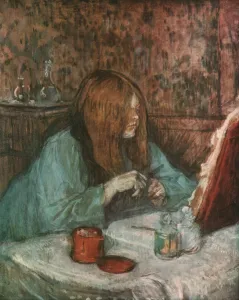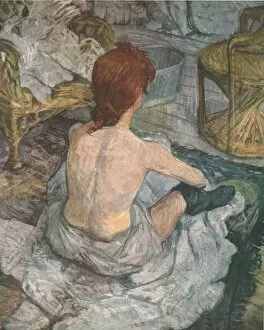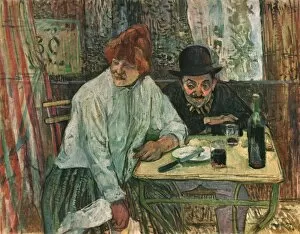"Fin de Siècle: A Glimpse into the World of Henri de Toulouse-Lautrec" Step into the vibrant and decadent world of late 19th-century Paris with these captivating artworks by Henri de Toulouse-Lautrec. Known for his keen observations of society, Lautrec's paintings provide a window into the lives of both high society and bohemian culture during this transformative era. In "Madame Poupoule at her Toilet, " we witness an intimate moment as a woman prepares herself for the night ahead. The soft lighting and delicate brushstrokes evoke a sense of anticipation, hinting at the allure that awaits beyond closed doors. "Lautrec's portrayal of La Goulue at the Moulin Rouge captures the energy and excitement that permeated this iconic venue. With her flamboyant costume and dynamic pose, La Goulue becomes a symbol of freedom and self-expression in an era marked by social constraints. "The Modiste" transports us to a bustling hat shop where women gather to find their perfect accessory. Lautrec's attention to detail showcases not only his technical skill but also highlights how fashion played a significant role in defining one's identity during this time. "In a Private Dining Room (At the Rat Mort)" offers us a glimpse into an exclusive gathering, where individuals indulge in lavish meals amidst opulent surroundings. Through Lautrec's masterful use of color and composition, he invites us to partake in their extravagant lifestyle while subtly alluding to its transitory nature. Lautrec also turns his gaze towards men with "Monsieur Boileau at the Cafe. " This portrait captures Monsieur Boileau engrossed in thought, perhaps contemplating life's uncertainties or lost dreams—a poignant reminder that even amidst grandeur, introspection remains universal. With "Rue des Moulins, " Lautrec takes us down dimly lit streets, revealing the hidden corners of Parisian nightlife.







